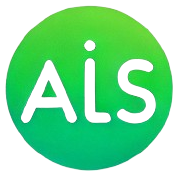Manual Therapy vs. Instrument-Assisted Soft Tissue Mobilization: A Comprehensive Comparison Guide
Introduction
When it comes to treating musculoskeletal issues and promoting recovery, manual therapy and instrument-assisted soft tissue mobilization (IASTM) are two popular and effective techniques. In this comprehensive guide, we will delve into the differences, benefits, and applications of these two approaches to help you make an informed decision about which may be best for your needs.
Understanding Manual Therapy
Manual therapy involves hands-on techniques used by trained healthcare professionals to diagnose and treat soft tissues and joint structures. This type of therapy aims to reduce pain, improve range of motion, and enhance overall function.
Common forms of manual therapy include:
- Massage therapy
- Joint mobilization and manipulation
- Myofascial release
- Trigger point therapy
Manual therapy is often used by physiotherapists, chiropractors, osteopaths, and massage therapists to address a wide range of conditions, including back pain, neck pain, sports injuries, and arthritis.

Exploring Instrument-Assisted Soft Tissue Mobilization (IASTM)
Instrument-assisted soft tissue mobilization (IASTM) is a specialized form of manual therapy that utilizes tools to detect and treat soft tissue dysfunction. These tools, often made of stainless steel or plastic, are used to apply targeted pressure and friction to muscles, tendons, and ligaments.
Key benefits of IASTM include:
- Breaks down scar tissue
- Reduces inflammation
- Improves blood flow
- Enhances tissue healing
IASTM techniques are commonly used by physical therapists, sports therapists, and chiropractors to address conditions such as tendonitis, plantar fasciitis, and muscle strains.

The Key Differences Between Manual Therapy and IASTM
While both manual therapy and IASTM aim to address soft tissue dysfunction and improve musculoskeletal health, there are key differences between the two approaches:
- Manual therapy relies on the practitioner’s hands to assess and treat soft tissues, while IASTM uses specially designed tools.
- IASTM can provide more targeted and precise treatment to specific areas of soft tissue dysfunction compared to manual therapy.
- Manual therapy may involve a wider range of techniques, including massage and joint mobilization, while IASTM focuses specifically on soft tissue manipulation.
- Some individuals may find IASTM more comfortable than manual therapy, as it can be less invasive and provide consistent pressure.
Which Approach Is Right for You?
Choosing between manual therapy and IASTM depends on various factors, including your specific condition, personal preferences, and treatment goals. Here are some considerations to keep in mind:
- If you prefer hands-on techniques and a more holistic approach to treatment, manual therapy may be the right choice for you.
- Individuals with acute injuries or localized soft tissue dysfunction may benefit from the targeted approach of IASTM.
- Some practitioners may use a combination of manual therapy and IASTM to optimize treatment outcomes and address different aspects of a patient’s condition.
- It’s essential to consult with a qualified healthcare provider to determine the most suitable treatment approach based on your unique needs and circumstances.
Conclusion
Manual therapy and instrument-assisted soft tissue mobilization are valuable techniques that can help alleviate pain, improve function, and enhance recovery for individuals dealing with musculoskeletal issues. By understanding the differences and benefits of these approaches, you can work with your healthcare provider to develop a personalized treatment plan that best suits your needs and goals.
Remember, the key to successful treatment is collaboration between you and your healthcare team, so don’t hesitate to ask questions, voice your concerns, and actively participate in your recovery journey.

